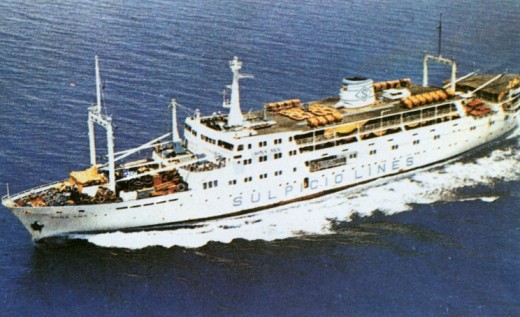Asian Titanic Tragedy
MV Dona Paz
The collision that happened on December 20 1987 between Philippine-registered ferry MV Dona Paz and the oil tanker MT Vector was the deadliest ferry disaster in history and is considered the worst peace time maritime disaster in history. Claiming over 4000 lives in total, with an exact reported count of 4375 people, National Geographic has went on to label the MV Dona Paz disaster with MT Vector as Asia’s Titanic.
Prior to becoming a Philippine-registered ferry, the MV Dona Paz was built and registered in Japan in 1963 as Ryukyu Kaiun where it ferried Japanese to and fro Hiroshima and had a passenger capacity of 608 people. Upon the purchase of the ferry by Philippine-owner Sulpicio Lines, it was renamed the Dona Paz in 1981. MV Dona Paz was part of a huge fleet owned by Sulpicio Lines and when tragedy struck the ferry, it was plying the route of Manila, Tacloban, and Catbalogan and return back to Manila where it would make the same trip again, in reverse.
MV Dona Paz

The tragedy happened in the night at 2230HRS, when most of the passengers of MV Dona Paz were asleep. The ferry, traveling over choppy seas along Tablas Strait between Mindoro and Tablas had clear visibility but collided with oil tanker MT Vector, which was carrying an estimated 8000 barrels of gasoline owned by Caltex Philippines. The collision was followed by a chain of events that led to the devastating tragedy. Upon the collision between the ferry and the tanker, the cargo within MT Vector caught fire and with highly-flammable gasoline on board, it quickly spread throughout the tanker and within the confinements of the ferry.
MV DONA PAZ TRAGEDY DOCUMENTARY
An explosion occurred and within mere minutes, the MV Dona Paz sank, causing survivors of the initial fire and explosion to jump off the ship and into the shark infested waters of Tablas Strait. Despite Dona Paz having a ship manifest of only 1500 on board, more than its 1424 allowed on the ferry, it was later found out that the ferry had over 3000-4000 passengers on board and it was heavily overcrowded. Of the thousands that were on board the ferry and the tanker, only twenty six survived through the ordeal. Twenty-four of them were passengers of Dona Paz and two crew members from Vector. Through inquiries and investigations, Vector was found liable for the collision as it was found out that the crew members of the tanker were under qualified and the license of the boat had expired, hence, MT Vector was not seaworthy and that it caused the collision between the tanker and the ferry.
More survivors could have been saved from the collision if authorities took lesser time to find out about the incident. It allegedly took a total of sixteen hours for the Philippine maritime authorities to learn of the incident and begin search and rescue operations. In a collision consisting of highly flammable cargo and shark-infested waters, it was indeed a miracle that twenty six survivors were found. Within days of the incident, due to it being close to Christmas, many officials from countries conveyed their message of condolences to the victims of the incident and those affected by the tragedy. Philippine President Corazon Aquino labeled it a national tragedy. The collision, however, was more than a national tragedy. December 20 will always be remembered as the day the worst ferry disaster in history occurred.





